A Guide to the Six Oases: Egypt’s Hidden Jewels
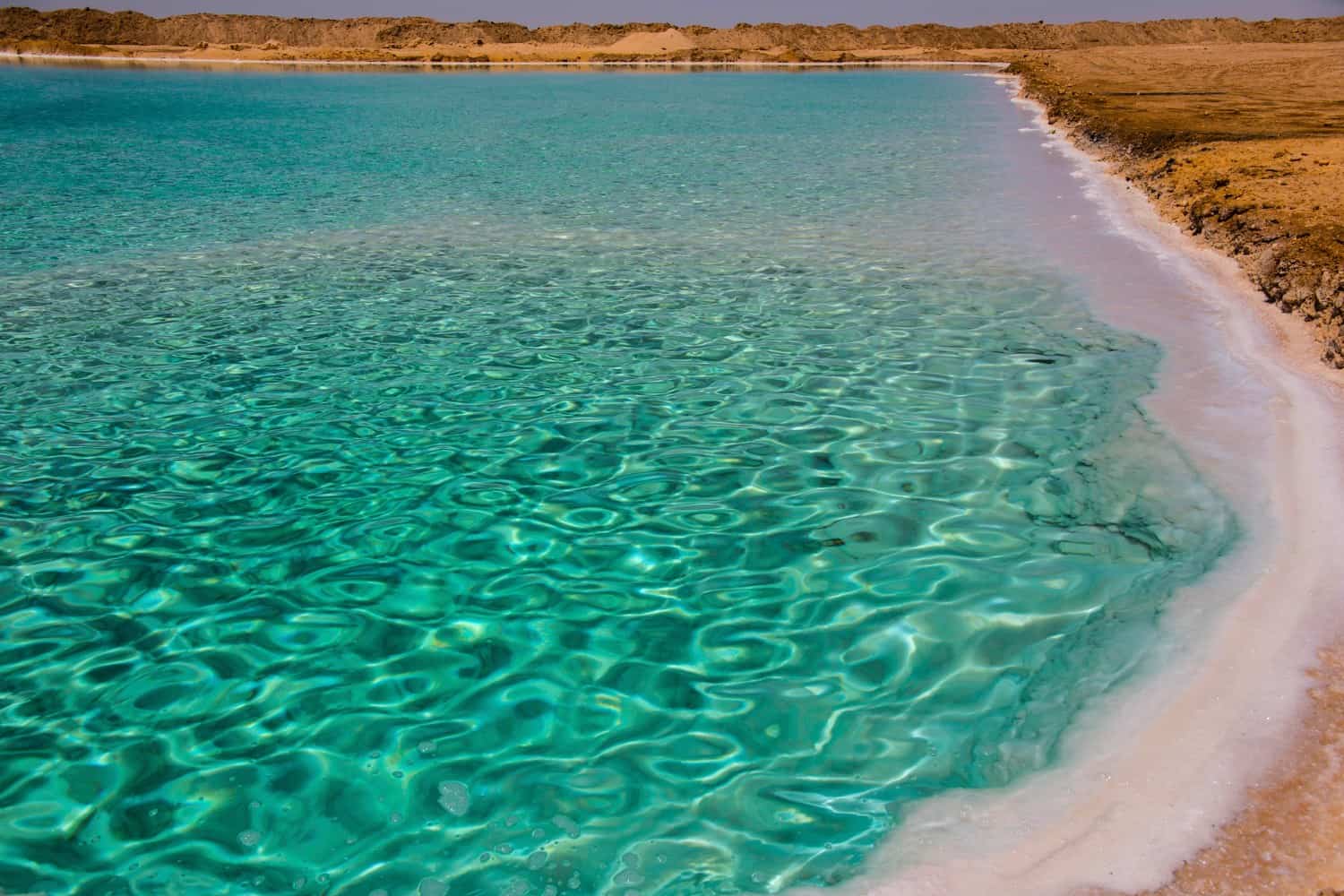
Updated On: April 16, 2024 by ConnollyCove Team
If Egypt’s majestic pyramids and vibrant bazaars have captivated you, prepare to discover a whole new side of this enchanting country.
Venturing beyond the frequently visited sites of Cairo, Luxor, and Alexandria reveals a lesser-known but equally captivating facet of Egypt. This hidden gem often remains unnoticed by the everyday traveller—the magnificent oases of Egypt. These are verdant patches of serenity interspersed amidst the seemingly infinite expanse of the arid desert. Truly, they are Egypt’s hidden jewels.
Dotted across the landscape of the Western Desert, these six oases—Kharga, Dakhla, Farafra, Bahariya, Siwa, and Fayoum— are unique pockets of life and culture, each with its own distinct charm. Their history is as deep as the wells that nourish them, with tales dating back to the Pharaohs, through the Roman times, and into the present.
These attractions boast a unique geography that sets them apart. Imagine lush palm groves and freshwater springs emerging out of nowhere in the middle of the desert. Picture small, tranquil villages nestled amidst rolling dunes and rugged mountain landscapes. These are the Egyptian oases—each is a world unto itself, offering a stark contrast to both the surrounding desert and the urban sprawl of Egypt’s cities.
In this comprehensive guide, we will take you on an enchanting journey through each of these oases, unveiling their historical significance, unique attractions, and the various activities that you can indulge in. So buckle up, dust off your explorer’s hat, and join us as we show you how to enjoy the 6 incredible oases in Egypt for the best adventure of your lifetime.
Is It Hard to Reach the Oases?
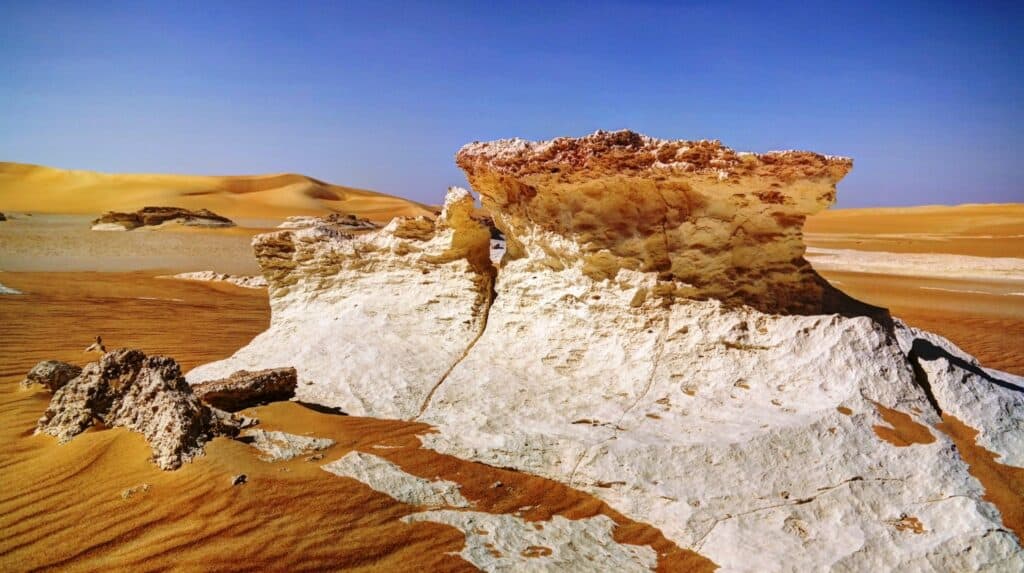
Reaching these oases is part of the adventure. They are well connected with major cities like Cairo, Luxor, and Alexandria by road. Regular buses ply these routes, or you could opt for a more leisurely and scenic drive if you’re up for a road trip.
When Is the Best Time to Visit the Oases?
The optimal period for visiting is during the less warm months, spanning from October to April. The summer season can bring intense heat, particularly in the heart of the desert. However, bear in mind that every oasis possesses its unique microclimate. Therefore, it’s prudent to verify the particular weather conditions before your journey.
1. Siwa Oasis: The Oracle’s Retreat
Tucked away near the border with Libya, Siwa is a verdant island in a sea of golden sands. Its geography is a charming blend of palm-studded landscapes, serene freshwater springs, and dramatic sand dunes, giving it a picture-postcard quality that is hard to resist.
Siwa is the most visited oasis, and it’s not hard to understand why. It’s a slice of paradise that fuses history, culture, and nature in an enchanting harmony. The Siwans, as the locals are called, have a distinct culture that sets them apart from the rest of Egypt. Their unique customs, distinct language, and warm hospitality add a unique flavour to the Siwa experience.
Oracle Temple, the Temple of Amun
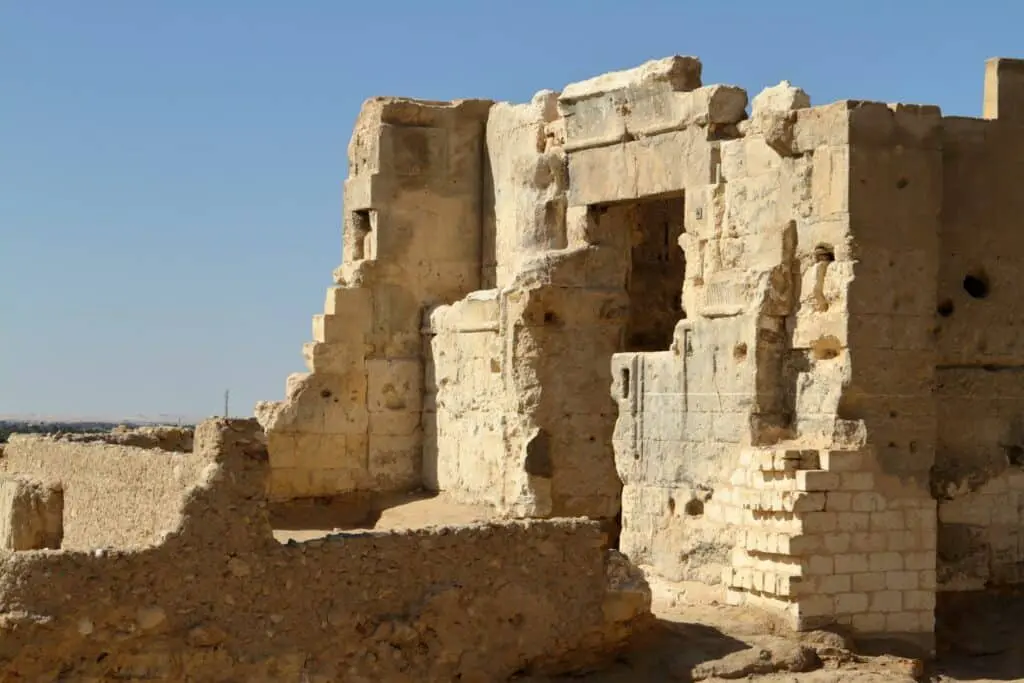
Among Siwa’s glittering array of attractions, three stand out prominently. The first is the Oracle Temple, also known as the Temple of Amun. This ancient shrine, once visited by Alexander the Great himself, offers an intriguing dive into the past. It’s a short climb to the top, but the panoramic views of the oasis from there are truly worth it.
Cleopatra’s Pool
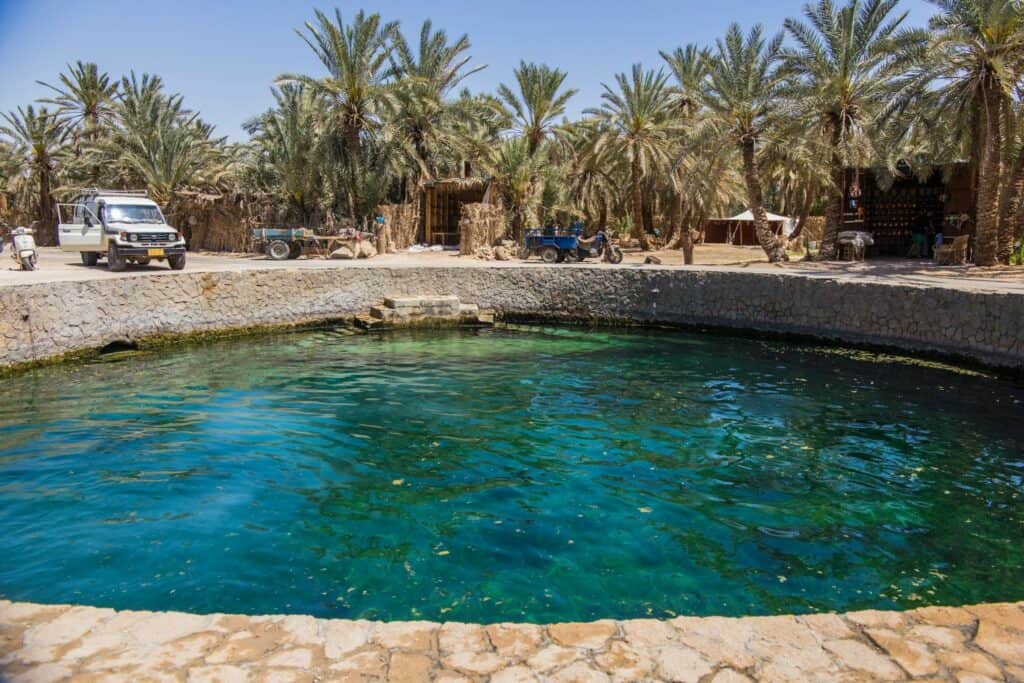
Next, we have Cleopatra’s Pool, a crystal-clear natural spring named after the legendary queen. It’s the perfect place to take a refreshing dip and escape the desert heat. Legend has it that Cleopatra herself bathed here, and who are we to argue with that?
Mountain of the Dead
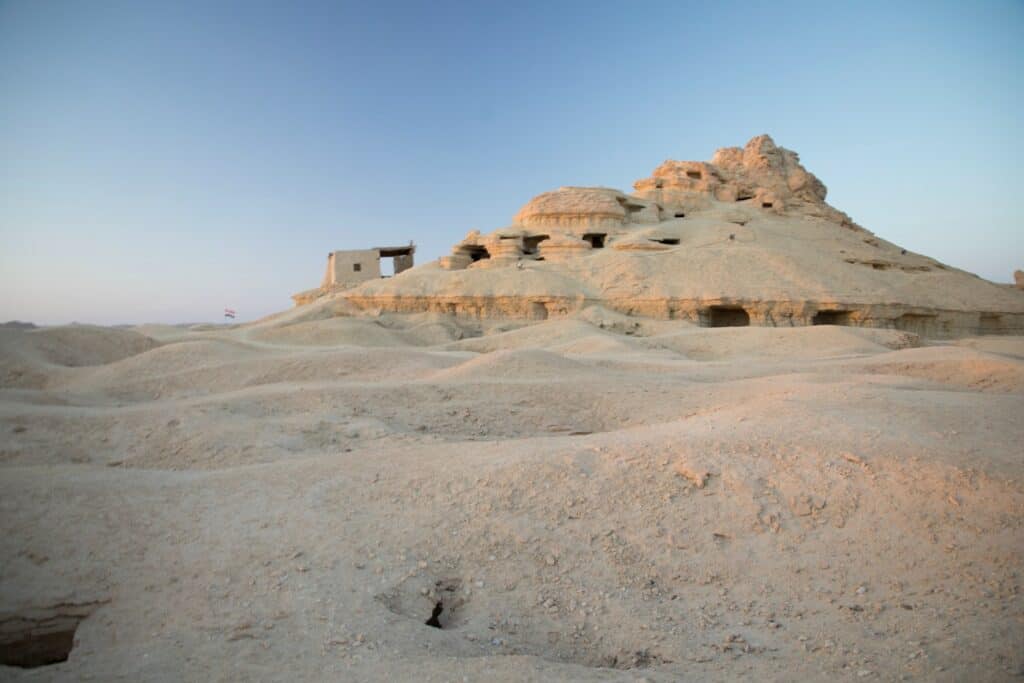
Finally, we reach the Mountain of the Dead, alternatively known as Gebel al-Mawta. The slope is scattered with ancient tombs from the Ptolemaic and Roman periods. While its name may be slightly ominous, it’s an interesting site to explore, offering a unique view into Siwa’s rich historical tapestry.
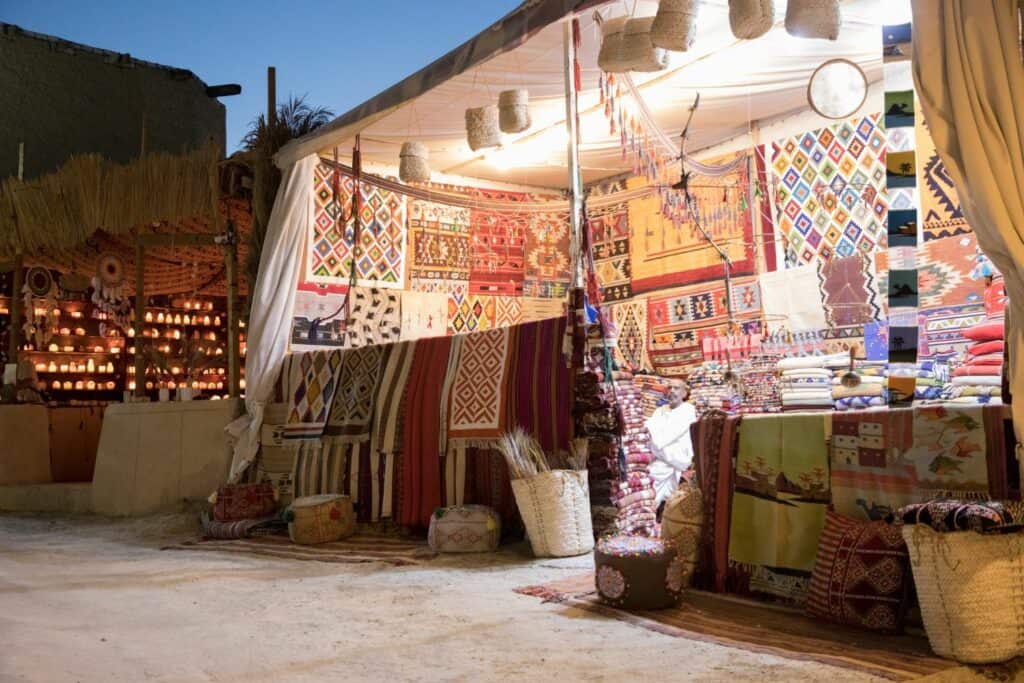
But Siwa isn’t just about sightseeing. It’s also a playground for outdoor enthusiasts. You can rent a bike and traverse the palm groves and olive orchards.
Sandboarding down the Great Sand Sea’s dunes is an exhilarating experience. Don’t forget to spend some time strolling around the Shali (the old town) to witness the Siwan culture up close. You’ll find local artisans creating beautiful handicrafts and traditional Siwan cuisine that you mustn’t miss.
In Siwa, you’ll find a blend of history, culture, and adventure that’s hard to match. Its unique character and charm have a way of leaving an indelible imprint on all who visit.
So come, let Siwa cast its spell on you. You won’t be disappointed!
2. Kharga Oasis: The Southern Gateway
Our journey takes us next to the Kharga Oasis, the southern gateway to Egypt’s Western Desert. With the backdrop of the barren desert, Kharga’s lush palm groves and fields of crops come as a refreshing surprise.
The oasis sprawls across a wide basin, with vibrant settlements and ancient ruins dotting the landscape. Its unique geography, a mix of vast desert plains and fertile land, sets Kharga apart and adds to its allure. As we delve into Kharga’s rich historical tapestry, three sites command our attention.
Hibis Temple
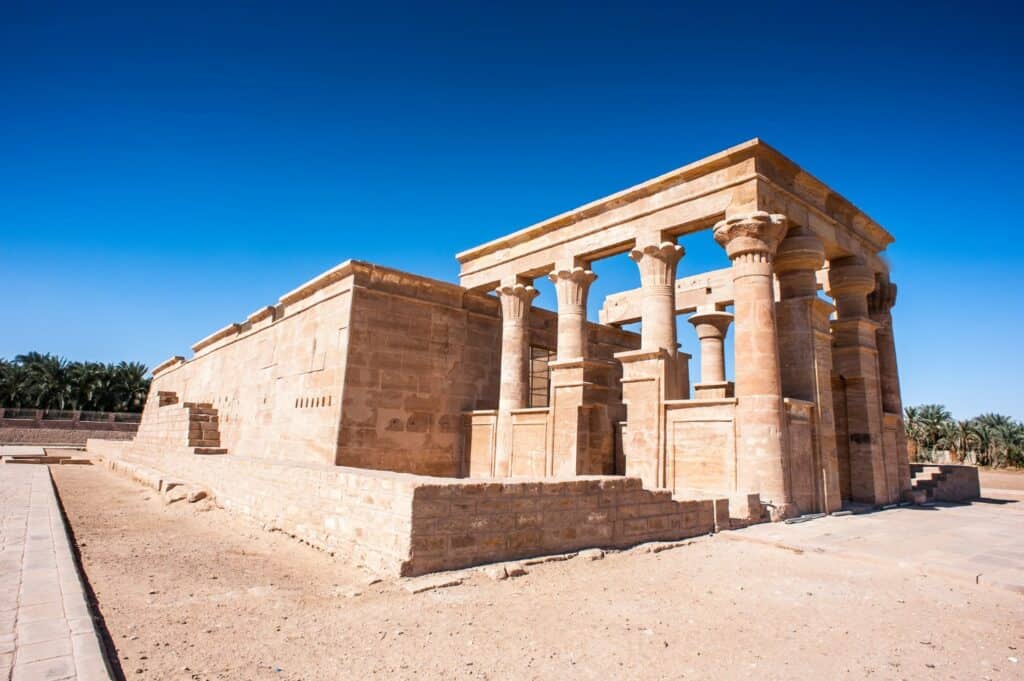
First on our list is the Hibis Temple, a testament to the architectural prowess of the ancient Egyptians. This well-preserved temple, dedicated to the god Amun, is a fascinating snapshot of Egypt’s Third Intermediate Period. Its intricate carvings and reliefs transport you back in time, offering a glimpse into Egypt’s glorious past.
Necropolis of Al-Bagawat
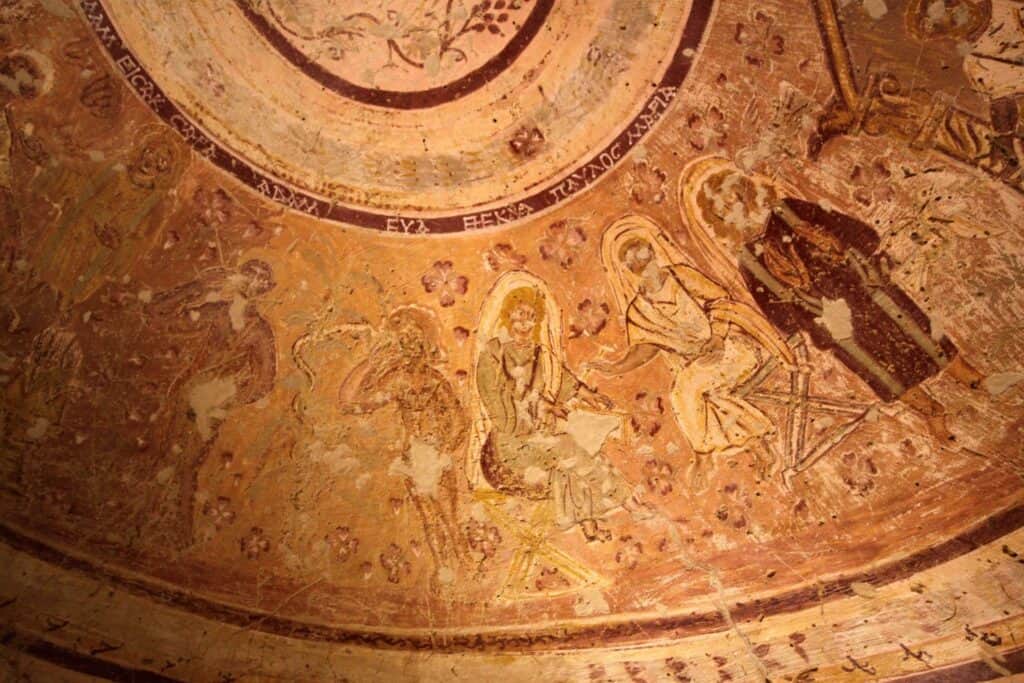
A stone’s throw away from Hibis, you’ll find the Christian Necropolis of Al-Bagawat, one of the oldest in the world, including tombs that date back to the 4th century. The chapels with biblical scenes painted on their walls are particularly captivating, creating a surreal blend of life and death.
Temple of Nadura
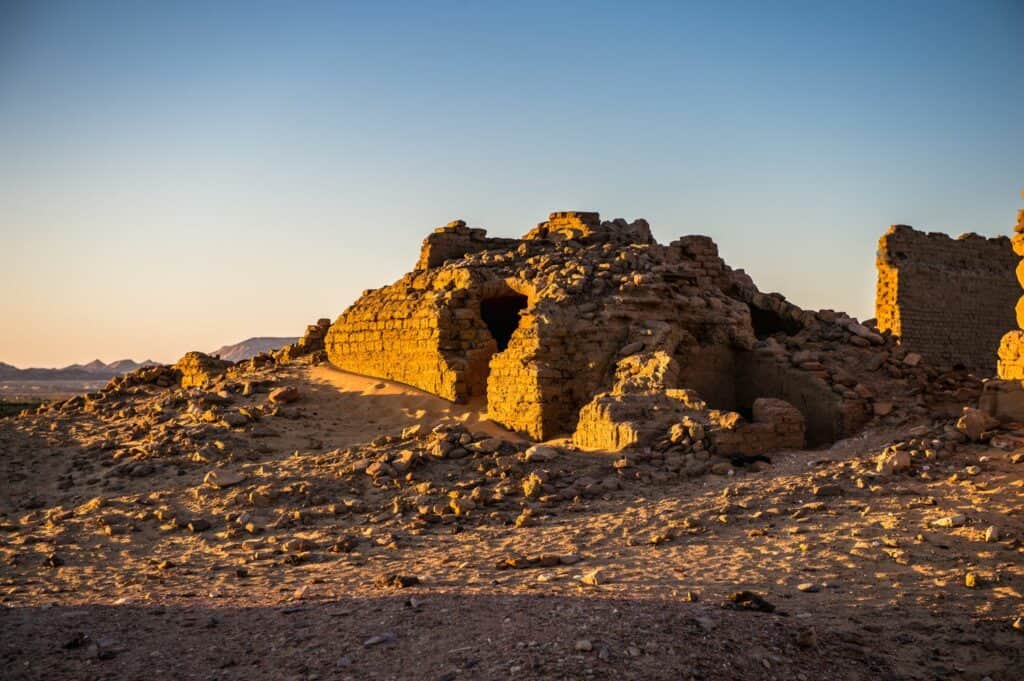
The Temple of Nadura rounds off our historical tour of Kharga. Perched on a hill, this Roman-era temple offers panoramic views of the surrounding oasis. While much of its structure has succumbed to the sands of time, its remaining walls and arches tell tales of the Roman presence in this remote desert outpost.
But Kharga isn’t just about ancient ruins. It’s also a thriving hub of local culture. Spend some time wandering through the local markets, and you’ll find a medley of sights, sounds, and scents.
From hand-woven carpets and pottery to fresh produce and traditional foods, there’s something for everyone. Don’t forget to sample the local cuisine—the freshly baked bread, tender lamb dishes, and sweet dates are not to be missed.
In Kharga, history and culture are not just to be seen but to be lived. It’s an oasis that invites you to immerse yourself in its timeless charm, experience its vibrant local life, and walk in the footsteps of the ancients.
3. Dakhla Oasis: A Journey Back in Time
As we venture further into the heart of the desert, we arrive at the Dakhla Oasis. A haven of green amidst the arid landscapes, Dakhla blends into the horizon with its lush palm groves and shimmering lakes. Enclosed by pink-hued cliffs and dotted with a number of springs, the oasis is a geographical marvel that adds a splash of colour to the desert’s monochrome palette.
Stepping into Dakhla is like stepping back in time. The oasis is home to a treasure trove of historical attractions, each weaving its own tale from a different era.
Deir El-Hagar Temple
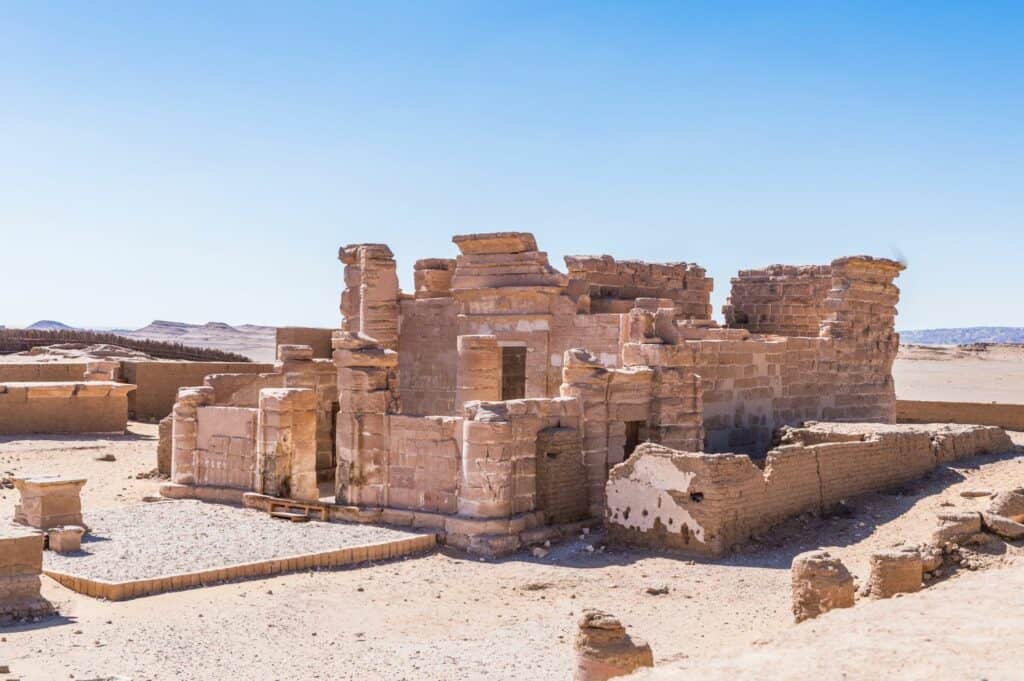
The Deir El-Hagar temple, for instance, bears the imprints of the Roman, Ptolemaic, and Coptic periods. Restored diligently, this sandstone temple, with its still-vivid carvings, offers a fascinating insight into the religious practices of the bygone eras.
The Old Town of Al-Qasr
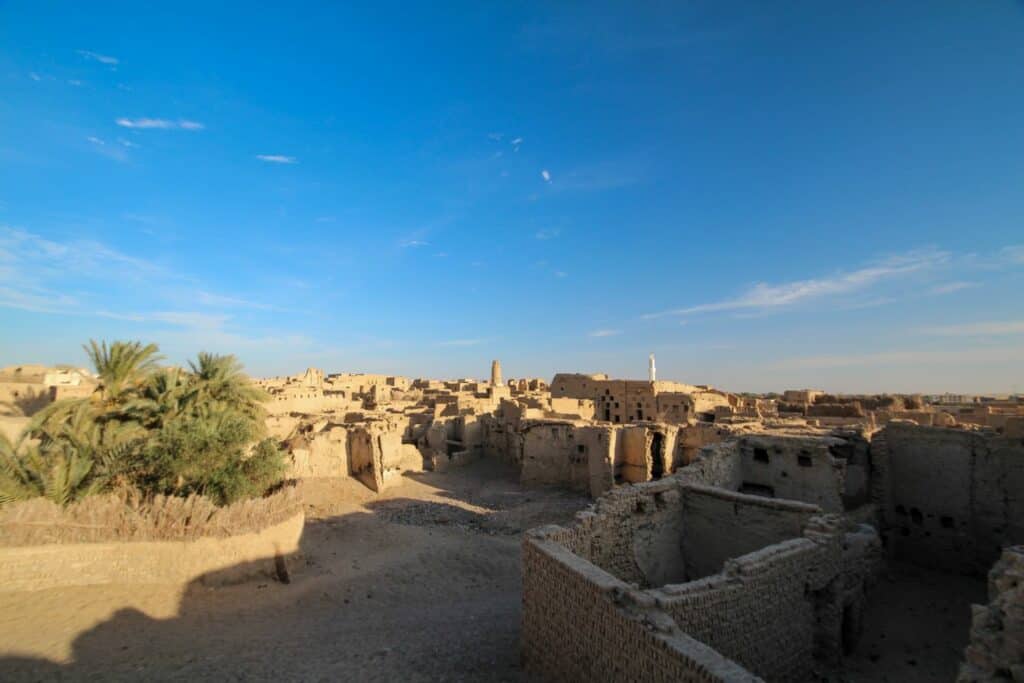
Further down the road, you will stumble upon the mediaeval Islamic town of Al Qasr. This 12th-century settlement, with its labyrinthine alleyways and mud-brick houses, is a living witness to the region’s mediaeval heritage.
Ethnographic Museum in Mut
If you’re a fan of history, the Ethnographic Museum in Dakhla is an essential destination. As an ethnoarchaeological institution, it hosts an array of artefacts which recount a comprehensive narrative of the oasis’ past and the everyday lives of its residents, spanning from antiquity through to the present day.
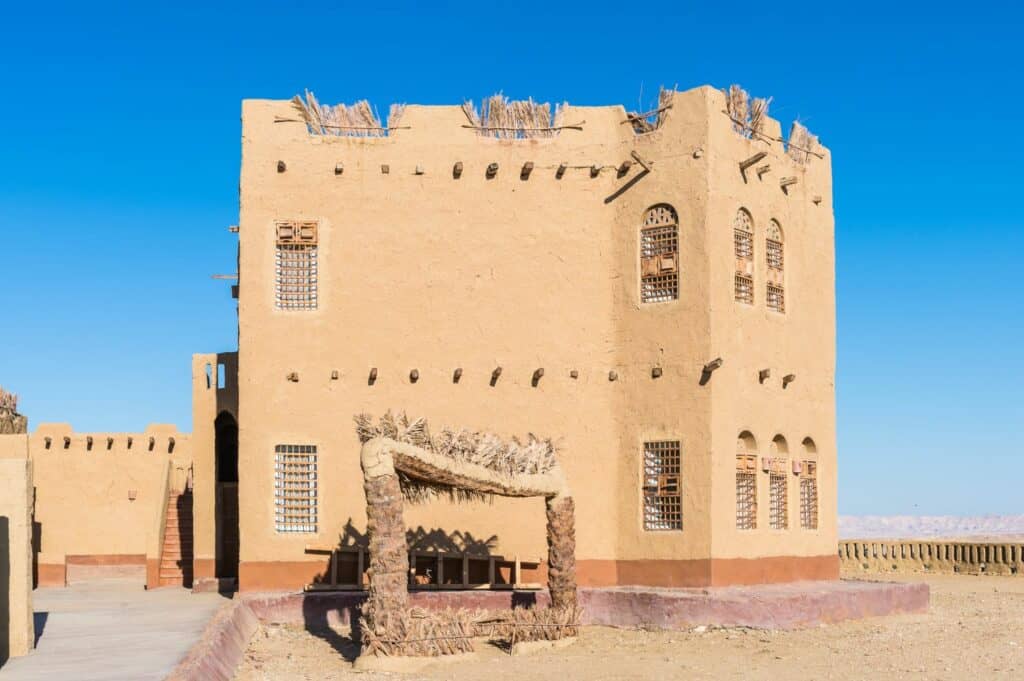
Dakhla is also a paradise for those seeking an authentic cultural experience. Engage with the local artisans who weave magic with their hands, creating beautiful pottery and textiles.
For culinary adventurers, traditional cooking lessons offer a chance to delve into the local cuisine. Learn how to prepare ‘fatta‘, a traditional meat and rice dish, or bake your own ‘shamsi’ bread.
Exploring the ancient mud-brick houses, some of which are still inhabited, is another activity that should not be missed. These houses, with their simple yet effective architecture, offer a peek into the traditional way of life in Dakhla.
4. Farafra Oasis: The White Desert’s Crown
Our journey now takes us to the Farafra Oasis, often called the White Desert’s crown. Nestled amidst the vast emptiness of the Western Desert, Farafra is the most isolated of Egypt’s six oases. Its tranquil setting, with sprawling palm groves and hot springs, is framed by the mesmerising contours of the White Desert.
Farafra’s Landscapes
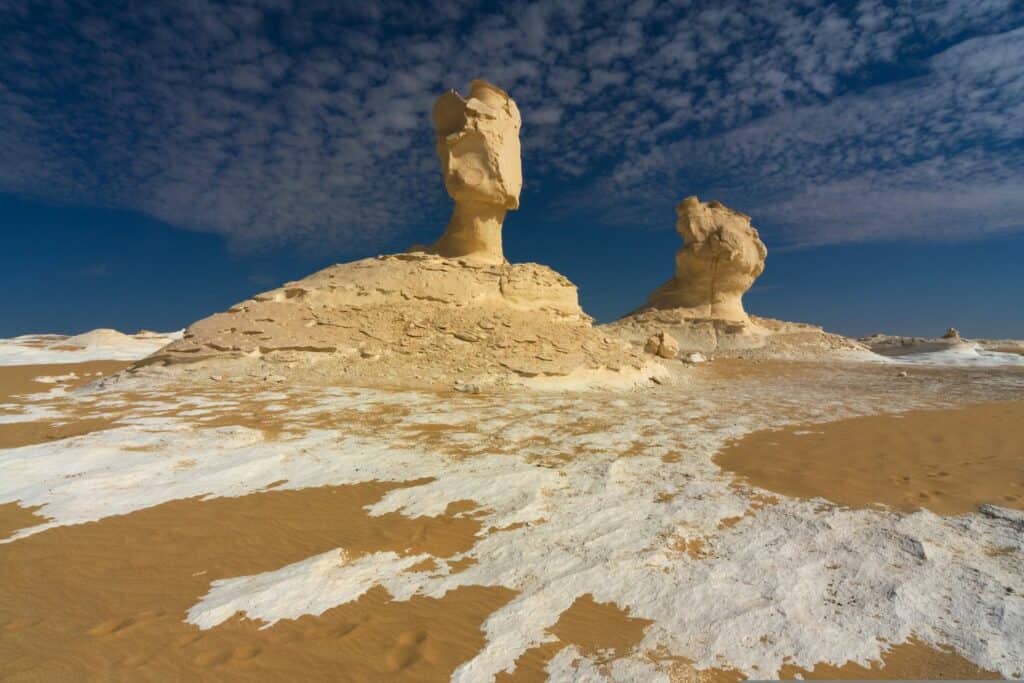
Farafra’s crowning glory is undoubtedly the White Desert National Park. The surreal landscapes of the park, with its chalk-white rock formations rising out of the desert floor, are an unforgettable spectacle.
These wind-sculpted formations, shaped like giant mushrooms, cones, and monoliths, create a dreamlike panorama that seems to belong to another planet. As the day fades into night, the play of light on these white rocks paints a kaleidoscope of colours, turning the desert into a canvas of nature’s artistry.
Outdoor Activities in Farafra
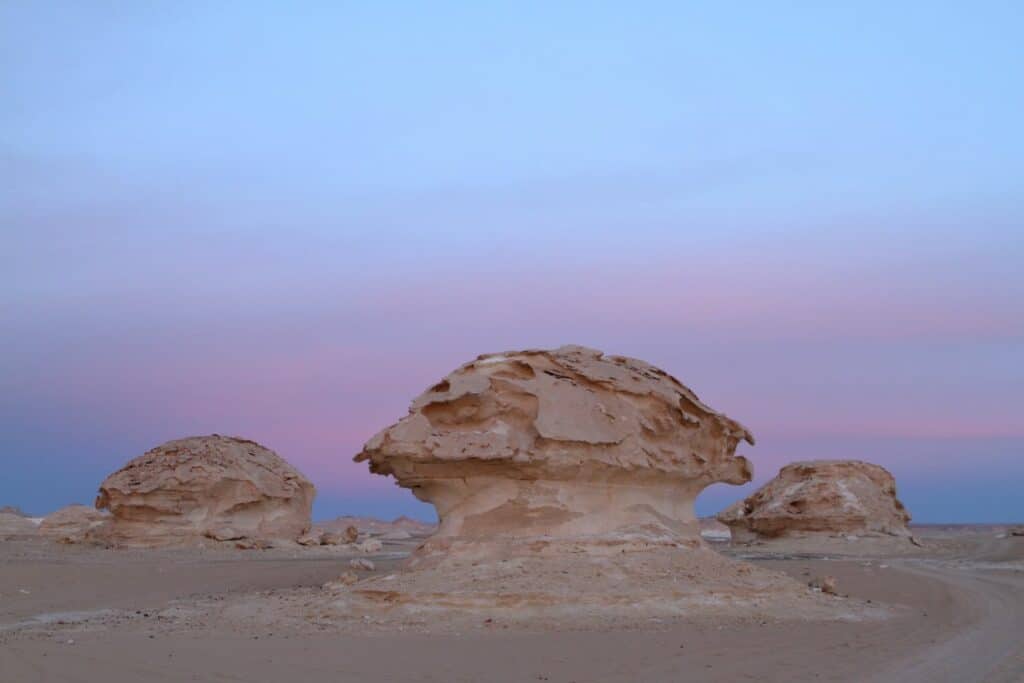
But Farafra is not just about inspiring landscapes. It’s also a hub for some exhilarating desert activities. Embark on a desert safari, navigating the dunes in a 4×4 vehicle or, for the more adventurous, on a camel’s back. The thrill of cruising over the undulating dunes with the desert wind in your hair is an experience that’s hard to beat.
As night falls, the desert transforms into a celestial theatre. With virtually no light pollution, the stars shine with an intensity that’s rarely seen elsewhere. Camping under this star-studded canopy, with the silence of the desert as your soundtrack, is a magical experience that transcends the ordinary.
Don’t forget to take a dip in one of Farafra’s many hot springs. The natural mineral-rich waters are said to have healing properties, and after a day of desert exploration, there’s nothing quite like a relaxing soak in these warm waters.
Farafra, with its enchanting White Desert and a myriad of experiences, offers a unique blend of tranquillity and adventure. It’s an oasis that dares you to break free from the usual, to embrace the extraordinary. So pack your sense of wonder and let Farafra reveal its magic to you. One thing is certain—you’ll leave with memories that will last a lifetime!
5. Bahariya Oasis: Gateway to the Golden Mummies
Our desert odyssey now leads us to the Bahariya Oasis, also known as the Gateway to the Golden Mummies. Bahariya is a picturesque oasis with rolling dunes, lush palm groves, and crystal-clear springs surrounding its tranquil settlements. The sparkling salt lakes that dot its landscape add a unique charm to Bahariya, making it a scenic delight.
Valley of the Golden Mummies
Bahariya is perhaps best known for its Valley of the Golden Mummies, an archaeological site that opened a new chapter in Egypt’s ancient history. Discovered in 1996, this vast necropolis is home to thousands of mummies, many adorned with golden masks and beautifully decorated coffins. Exploring this valley is akin to stepping into a time capsule, one that takes you back to the Greco-Roman era of Egypt’s history.
Other Significant Tombs and the Local Museum
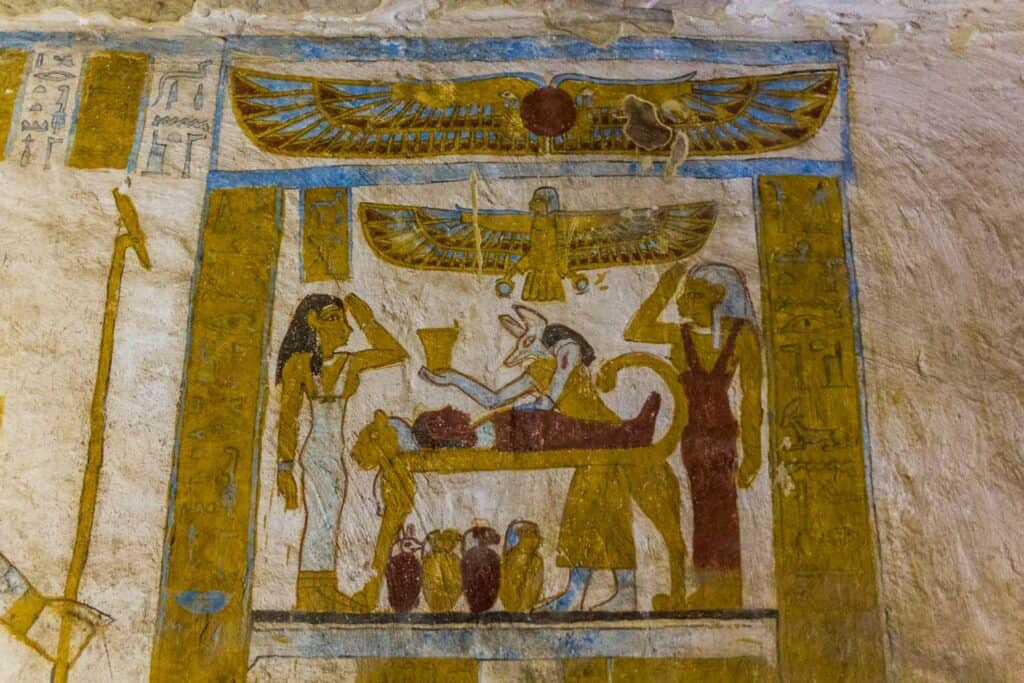
Beyond the mummies, Bahariya is dotted with other ancient tombs that offer a peek into the oasis’s past. The Tomb of Bannantiu, the Tomb of Zed-Amun-ef-Ankh, and the Tomb of Amenhotep are among the must-visit sites, each holding its own historical significance.
Bahariya isn’t just a portal to bygone times; it’s a flourishing, active oasis. A trip to the local museum, home to a trove of artefacts and mummies, deepens your comprehension of Bahariya’s abundant history and culture.
The Bahariya Oasis, teeming with its golden mummies, historic tombs, and lively ambience, is a locale where yesteryears and the current day blend seamlessly. This oasis beckons you to delve into its past and get lost in its natural splendour. So come, let Bahariya escort you on an expedition as radiant as its golden mummies!
6. Fayoum Oasis: Ancient Egypt’s Bread Basket
The final stop on our enchanting journey through Egypt’s oases is the Fayoum Oasis, often referred to as Ancient Egypt‘s Bread Basket. Unlike its counterparts, Fayoum is not a traditional oasis but a verdant area fed by Nile water via a network of canals. Its fertile lands, dotted with a patchwork of lush farms and palm groves, stretch as far as the eye can see, offering a stark contrast to the surrounding desert landscapes.
Hawara Pyramid
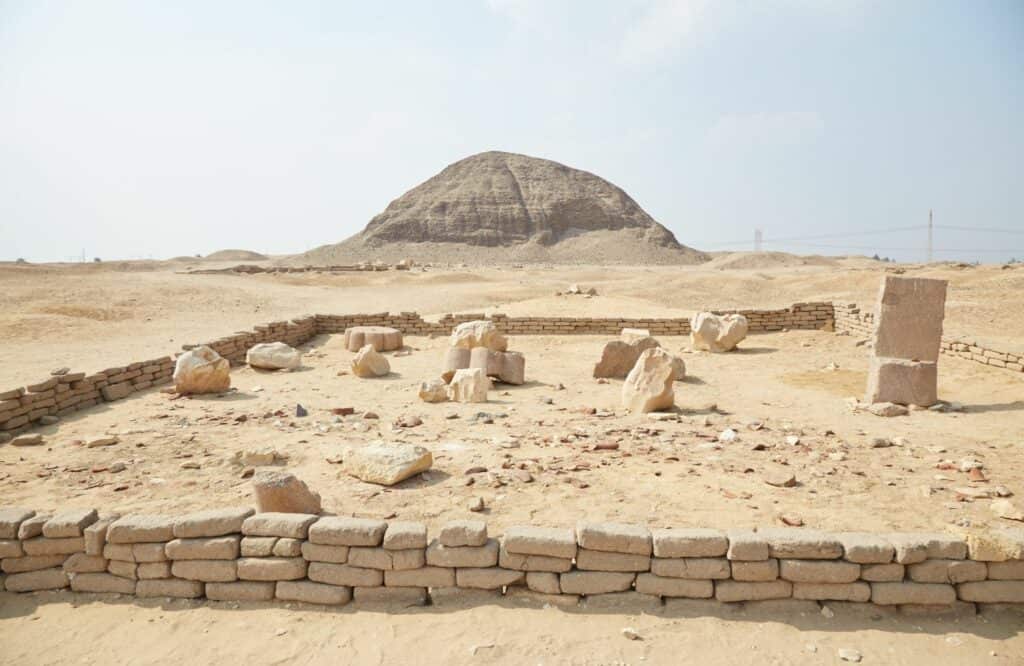
Fayoum’s claim to historical fame rests largely on the Pyramid of Hawara. This ancient pyramid, built by the Pharaoh Amenemhat III, is a marvel of the Middle Kingdom’s engineering prowess. While much of its original glory has faded, the labyrinthine passages within its core still spark intrigue and fascination.
Lake Qarun
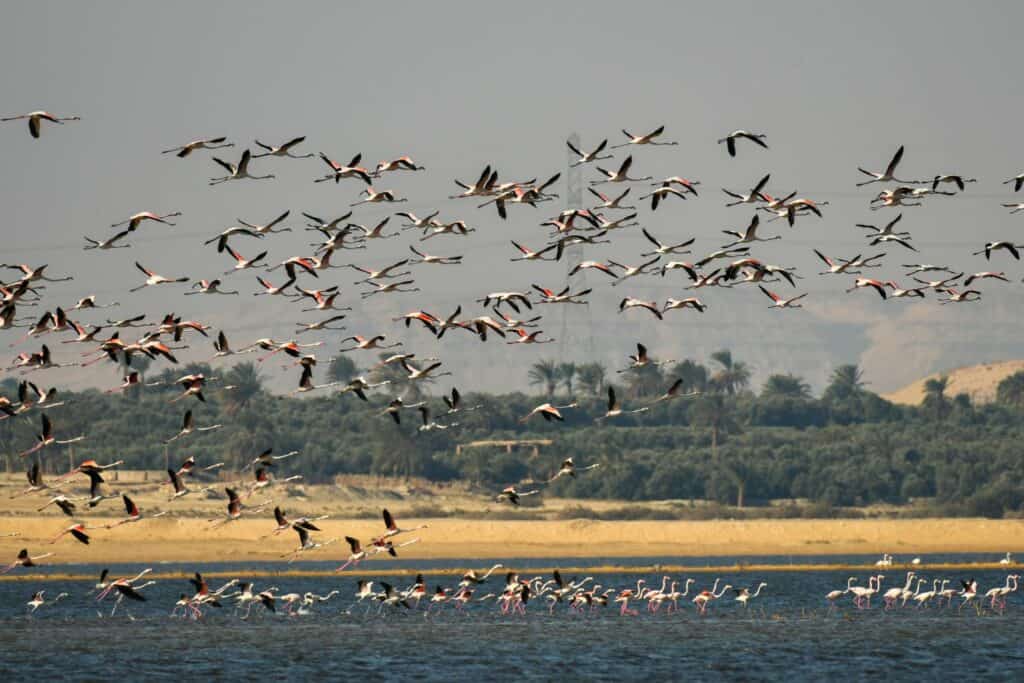
Lake Qarun, another of Fayoum’s treasures, is a shimmering expanse of blue in the heart of the desert. This saltwater lake, the largest in Egypt, is a haven for birdwatchers. Flamingos, herons, and pelicans are among the many species you can spot here. For those keen on angling, the lake offers excellent fishing opportunities.
Wadi Al-Hitan
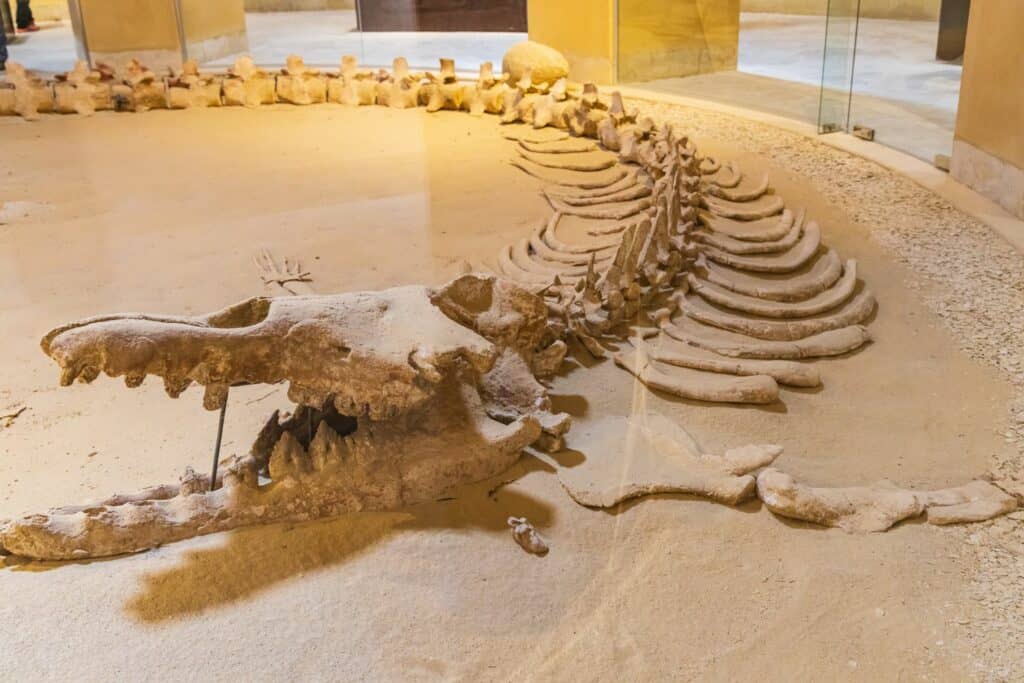
Our exploration of Fayoum would be incomplete without a visit to the Wadi Al-Hitan, or the Valley of the Whales. This UNESCO World Heritage Site is home to fossil remains of the earliest, now extinct, whales. These fossils, perfectly preserved in the desert sand, offer an intriguing insight into the evolution of these marine mammals.
The Ancient Waterwheels of Life
Fayoum also offers a unique cultural experience. The ancient waterwheels, still in use today, are a testament to the oasis’s ingenious irrigation system. Walking along the canals while listening to the rhythmic creaking of these waterwheels is a sensory delight.
Fayoum Oasis is a blend of history, nature, and culture and is a place that captivates and inspires. It’s an oasis that invites you to walk in the footsteps of the Pharaohs, witness nature’s splendour, and immerse yourself in its rich cultural heritage. So come, let Fayoum show you why it was revered as the breadbasket of ancient Egypt that continues to enchant visitors to this day!
In the Egyptian desert, every corner tells a story, every stone has a history, and every experience is a slice of life unchanged by the sands of time. It’s not just a visit—it’s a journey to go back in time.






